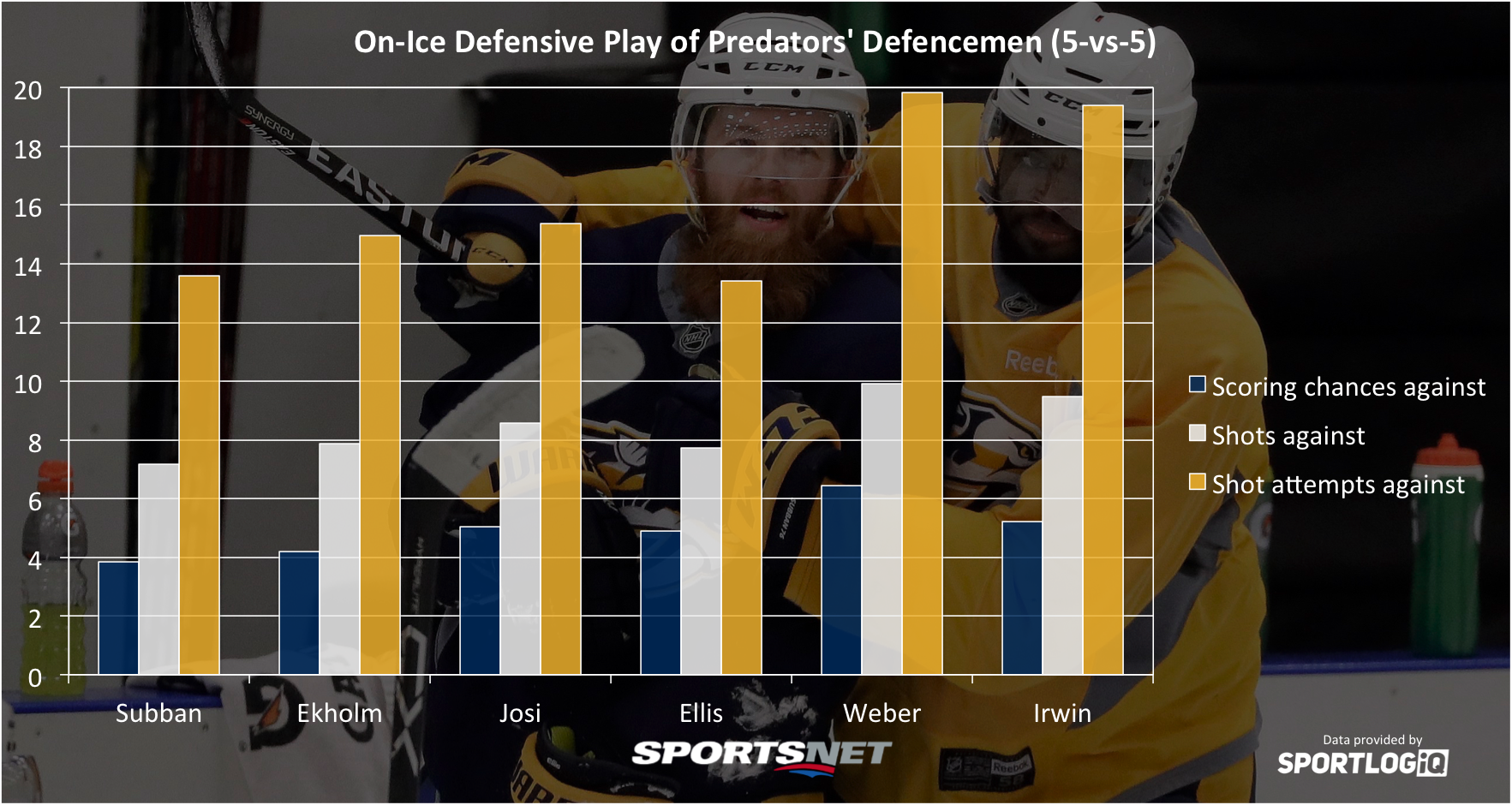Heading into the Stanley Cup Final, the story was always going to be offence versus defence, and while we’ve had some goaltender controversies mixed in for both teams, so far that dynamic has held true.
Though the series is tied 2-2, it would be tough to argue against the fact that based on the flow of play so far, defence has been winning this battle pretty handily. The Nashville Predators have created more chances, utilized pre-shot movement to a greater degree, and scored more goals, despite the Pittsburgh Penguins’ Matt Murray putting up some excellent performances.
For whatever reason, while the focus is on Nashville’s defensive structure, there has been a lot of debate over who has been its best defender in this Stanley Cup Final, with many amateur analysts giving the nod to P.K. Subban, and many in the media giving credit to Roman Josi.
Ultimately, both players in this series are either facing Evgeni Malkin or Sidney Crosby almost all of the time, and the Predators have been winning both matchups, so I doubt that they care much internally, but let’s look at the defensive aspect of these matchups a little bit.
The Predators have done a good job limiting scoring chances and shots against, but how successful they are at it varies by who is on the ice.

While Subban is on the ice, the Predators give up the fewest scoring chances, shots, and shot attempts of all their defencemen, while the third pairing is the most porous, as you would expect.
Among the top-four group, Josi gives up the most, which is likely a result of his style of play, as he is more of a rover in the offensive zone that forces forwards to cover his position much more than usual, which can lead to him trailing the play when opponents head the other way.
Aside from simple positioning, what players do with the puck on their sticks is a big factor in the chances that end up going against them. To analyze that, we’ll look at two different metrics: pass success rate in each zone, and turnover rates in each zone. When looking at pass success rates, the higher the percentage the better, and for turnover rates the lower the better.
Essentially what we’re looking for here is how often opponents get opportunities because of misplays by each player, the kinds of plays onlookers would identify as risky.

Not surprisingly, based on the scoring chance numbers, Subban boasts the highest pass success rate on the team in two of three zones, and the highest overall by 10 per cent, along with the lowest turnover rate in every zone.
One thing to note here is that while Josi is the riskiest of the Predators’ top-four in terms of his positioning, his play with the puck on his stick isn’t especially risky. He does have a fairly high failure rate on passes in the neutral zone, as does Ryan Ellis, but both players prefer to skate the puck through the neutral zone so that isn’t really a problem for them.
Similarly, Josi isn’t a turnover machine with the puck. It’s been Mattias Ekholm more than anyone else in the top-four group that has struggled to move the puck, partly because teams have focused on forechecking him hard as he’s seen as the weakest pure puck-mover of the four.
What really stands out here is simply how efficient Subban has been with the puck on his stick, and how that has made things easier for everyone he plays with. For whatever reason, though, we still hear Subban spoken of as a risky player, even by those who will admit that his defending without the puck has been top notch.
The conversation surrounding Subban in Canadian media has always been weird, with a large contingent of respected journalists who refuse to recognize his great play without a qualifier of some kind. Whether that has to do with the strength of his team, too much offence, or too little, there’s always something.
The facts we have available show that even though Subban’s team is clearly strong, he stands out in a big way, has been the complete opposite of risky, and his team has significantly more success with him on the ice than off of it despite Peter Laviolette constantly giving his pairing the heavier matchups.
Why is it that so many can’t just appreciate Subban and Josi for what they are? These are two special players with very different styles of play, though it’s interesting that the exact things certain people criticize Subban for are the weaknesses in Josi’s game. Sometimes the eye test isn’t very helpful.
[relatedlinks]








